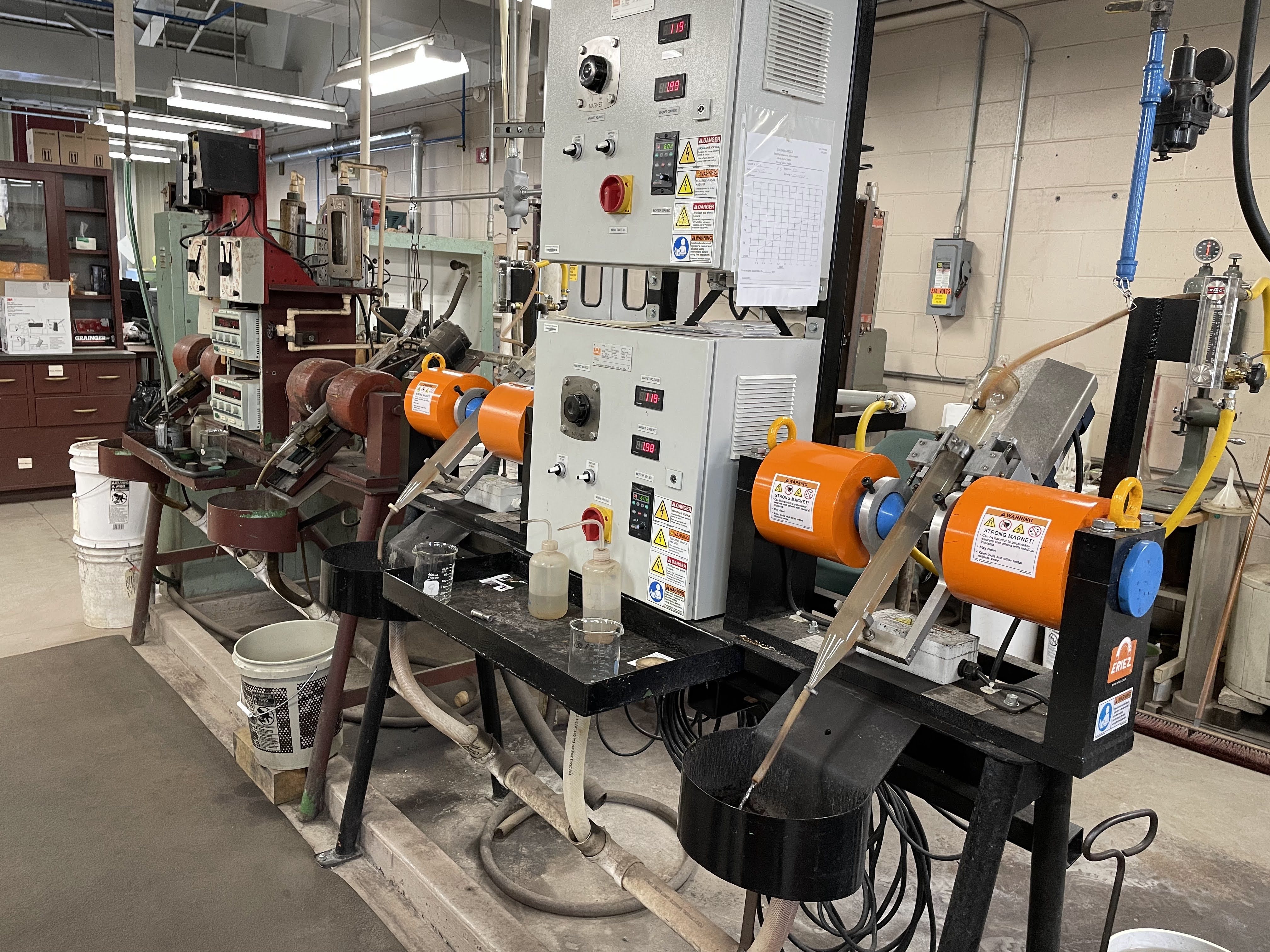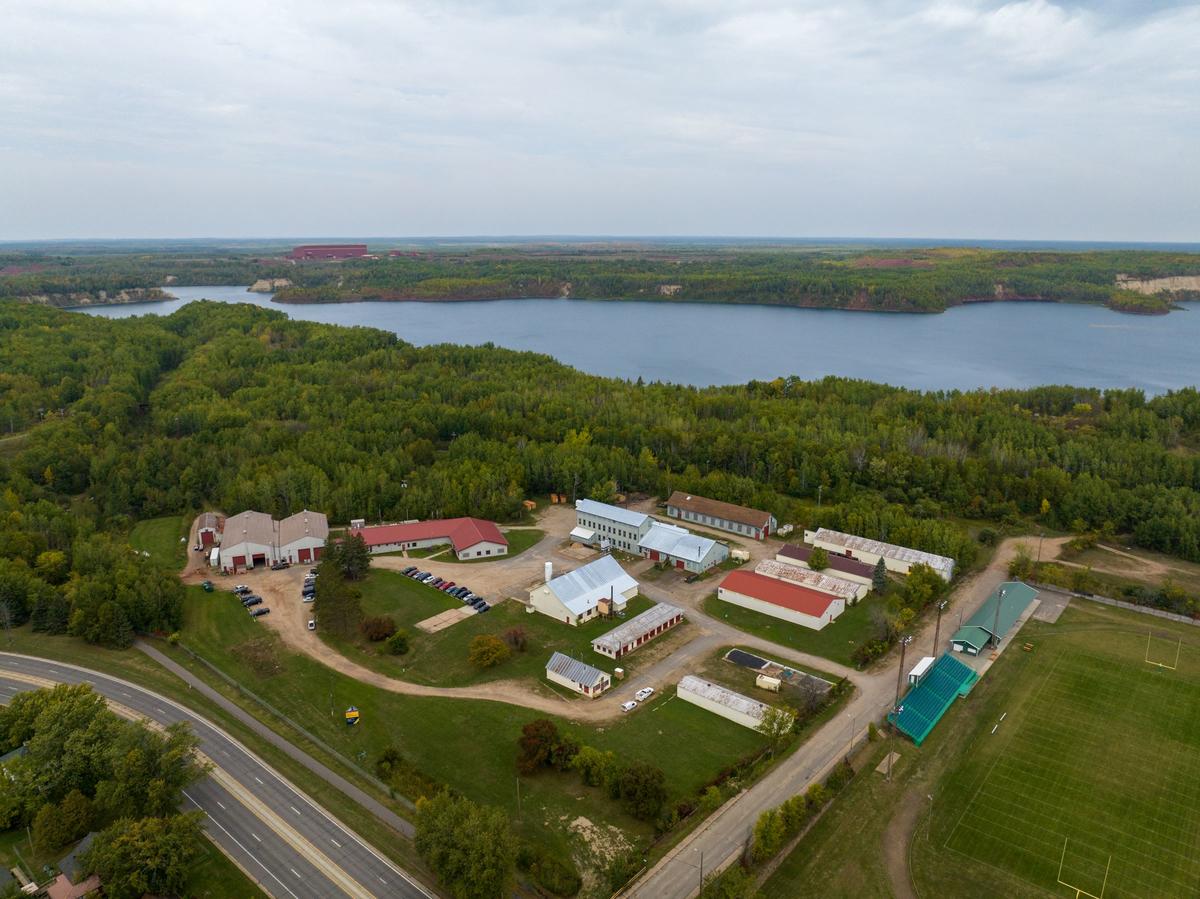Like NRRI’s Duluth facility, the 27-acre campus on Minnesota’s Iron Range in Coleraine was first built for something very different from the minerals and biomass research taking place today.
It was acquired by the University for NRRI in 1986 from U.S. Steel, who used the site for their taconite pellet research programs. It was initially built in the 1920s as a train maintenance facility by the now-defunct Oliver Mining Company. Vestiges of the early days remain in the train tracks still running through many of the structures.
“The key challenge at Coleraine is how to use 100-year-old maintenance garages to house state-of-the-art research programs, equipment and instrumentation,” said Kevin Kangas, NRRI Director of Technical Operations. “We’ve demolished or will demolish buildings that cannot be saved, and we’re rehabilitating what we can, but we still have places where snow drifts accumulate indoors in the winter.”
Gearing Up
NRRI Coleraine expertise is being heavily leveraged by state and federal agencies, industry, and other partners with projects focused on clean energy, hydrogen, biocarbon, and decarbonization of the iron/steel and cement/concrete industries.
In the past five years, NRRI has added staff to the Coleraine site to expand its research expertise to meet the growing demands of state, federal and industry funded projects. In several cases, NRRI recruited internationally to attract the required advanced skill sets. NRRI’s new talent has globally relevant experience in mineral characterization, mineral processing, extractive metallurgy, environmental chemistry and process flowsheet development.

Efforts to clean up and modernize the Coleraine facilities began soon after Rolf Weberg took the helm of NRRI as Executive Director in 2014. The efforts accelerated when Kangas was hired as Coleraine Labs Director in 2017.
“Our continual focus is to create and maintain world-class facilities that support cutting edge research and pilot demonstration to deliver solutions for our partners and collaborators,” said Weberg. “I’m really proud of how the Coleraine staff have driven a culture of continual improvement across the site.”
Future Focused
NRRI’s Operations and Research Teams are collaborating to make the best use of the available space facilities in Coleraine.
“We are working building-by-building to modernize lab spaces, improve ergonomics and workflow and present a professional face to our partners,” said Kangas.
The next major investment at NRRI Coleraine will be a new building to house a combination of analytical and mineral processing labs, meeting and office space and open floor space for large pilot plant demonstrations.
“New investment will cement NRRI’s role across the region in delivering solutions as we help create the economy of the future that leverages the new energy economy,” said Weberg. “The world is moving very quickly and NRRI intends to be ready and able.”
